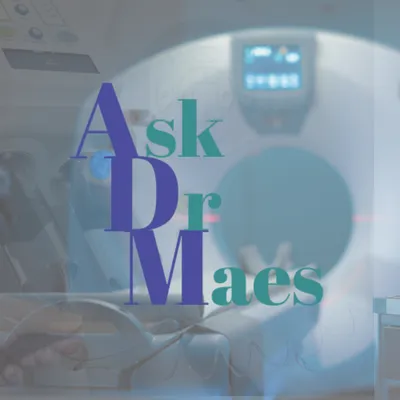
Clinical Considerations in Iodinated Contrast Use
Clinical Considerations in Iodinated Contrast Use: Understanding Strength, Osmolality, and Ionicity
The appropriate use of iodinated contrast media is central to the success and safety of modern radiology. These agents not only enhance diagnostic accuracy by increasing tissue and vascular conspicuity but also introduce physiologic variables that must be understood to minimize complications. A radiologist or referring clinician’s familiarity with contrast strength, osmolality, ionicity, and viscosity directly influences both image quality and patient outcomes.

Iodinated contrast strength refers to its iodine concentration, expressed as milligrams of iodine per milliliter (mg I/mL). The concentration determines the agent’s X-ray attenuation power and, therefore, the brightness or opacification of contrast-enhanced structures. Commonly available formulations include 240, 300, 320, and 350 mg I/mL. Lower concentrations such as Omnipaque 240 are suitable for slower-flow or localized studies—Face CT, arthrography, and myelography—where subtle enhancement suffices. Higher concentrations such as Omnipaque 350 or Isovue 370 are preferred for angiographic or computed tomographic angiography (CTA) studies where rapid vascular opacification is critical.
Although concentration determines instantaneous enhancement, the total iodine load—measured in grams of iodine delivered—is the key determinant of diagnostic contrast. The total iodine dose equals the product of the concentration and the injected volume. A typical adult abdominal CT uses approximately 1.5 grams of iodine per kilogram of body weight. Thus, a 70-kg patient receiving 100 mL of a 300 mg I/mL agent receives about 30 grams of iodine. Using a higher-strength 350 mg I/mL agent allows a smaller injected volume (around 85 mL) while delivering an equivalent iodine dose. This flexibility allows the clinician to balance vascular enhancement against total contrast load, particularly in patients with renal impairment or limited intravenous access.
Equally important to concentration is the concept of osmolality—the number of osmotically active particles per kilogram of solvent—which determines the solution’s tonicity relative to plasma (approximately 290 mOsm/kg). Early generations of contrast were high-osmolar ionic monomers, with osmolalities between 1500 and 2000 mOsm/kg—five to seven times that of plasma. These agents, such as diatrizoate (Hypaque), caused significant discomfort, endothelial irritation, and a higher incidence of adverse reactions and nephrotoxicity. Their use today is largely confined to gastrointestinal fluoroscopy or older urographic applications.

Modern nonionic monomers represent low-osmolar contrast media (LOCM), typically in the 600–850 mOsm/kg range—roughly two to three times plasma osmolality. Agents such as iohexol (Omnipaque), iopamidol (Isovue), and ioversol (Optiray) provide excellent image quality with dramatically improved safety profiles. The advent of these compounds reduced the rate of allergic-like and physiologic reactions and became the standard of care for intravenous and intra-arterial administration.
The most recent development, iso-osmolar contrast media (IOCM) such as iodixanol (Visipaque 320), matches plasma osmolality at approximately 290 mOsm/kg. Because these dimers cause minimal osmotic shifts across cell membranes, they are particularly advantageous in patients with diabetes, chronic kidney disease, or congestive heart failure. The trade-off is increased viscosity, which may require pre-warming to body temperature to improve injectability and reduce resistance during power injection.
Ionicity is closely related to osmolality. Ionic agents dissociate into charged particles when dissolved in water, thereby increasing the number of osmotic particles. Nonionic agents remain intact, resulting in lower osmolality for the same iodine concentration. This structural distinction explains why nonionic agents produce less discomfort, less chemotoxicity, and fewer adverse reactions. For intrathecal and intravascular use, nonionic formulations are overwhelmingly preferred for both safety and patient tolerance.
Viscosity represents another physical property with clinical consequences. As iodine concentration and osmolality increase, so does viscosity, influencing injection pressure and flow dynamics. High-viscosity agents can generate greater resistance through small-gauge intravenous catheters, necessitating higher injection pressures. Pre-warming the contrast to 37 °C can substantially reduce viscosity, improving flow rates and patient comfort while preventing mechanical injection issues.
The selection of a contrast agent should reflect the diagnostic purpose, patient condition, and delivery route. Routine CT examinations of the chest, abdomen, or pelvis typically employ low-osmolar nonionic agents in the 300–350 mg I/mL range, injected at 3–4 mL/s. CTA protocols often favor 350 mg I/mL at 4–5 mL/s to achieve rapid vascular enhancement. Intrathecal procedures require low-concentration nonionic agents (180–240 mg I/mL) with minimal osmolality to prevent neurotoxicity. For patients with elevated renal risk or hemodynamic instability, iso-osmolar iodixanol is often chosen despite its higher viscosity because of its superior renal and cardiovascular tolerability.

Contrast-induced nephropathy remains an important concern in radiology practice. The likelihood of renal injury correlates with total iodine dose, osmolality, and individual patient factors such as dehydration, diabetes, and baseline kidney disease. Mitigation strategies include using the lowest effective iodine dose, ensuring adequate hydration before and after the procedure, avoiding multiple contrast exposures within 24–48 hours, and substituting alternative imaging modalities (ultrasound or MRI) when feasible.
In clinical decision-making, understanding how these physical and chemical properties interact provides the foundation for safe and effective imaging. High-concentration contrast offers superior opacification but requires consideration of viscosity and osmolality. Low- or iso-osmolar, nonionic agents provide optimal patient comfort and minimal physiologic disruption. By tailoring contrast type and dose to the individual and the imaging indication, physicians can consistently achieve diagnostic excellence while minimizing risk—an equilibrium that lies at the heart of high-quality radiologic practice.
